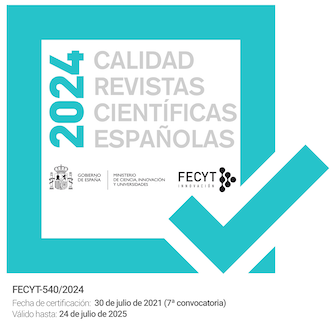Encuentro de Dionisio y Dédalo en el mundo híbrido del Color del verano de Reinaldo Arenas
DOI:
https://doi.org/10.30827/rl.v0i13.3783Keywords:
El color del verano, reinaldo arenas, labyrinth, cuban literatura, Kafka, Daedalus, DionysusAbstract
This paper proposes a reading of the novel Color del verano of Reinaldo Arenas from the significance of the institution of the labyrinth defined by Gustav René Hocke and also from Franz Kafka poetic, the great “constructor” of labyrinthine and extravagant universes. Hocke interprets literature within the Mannerist tradition, whose maximum expression is found in modern literature, built on the basis of the wandering labyrinthine principle. And precisely these coordinates that complement themselves, both at the level of significance and at the narrative level, will guide our reading of the text of Arenas in which we discover the background that Hocke finds at the root of Mannerist expression: the mythological tension between the daedalic and dionysiac principle that then allows to understand all the labyrinthine as an essential image of the being endowed with an ambivalent or tragicomic character. We will also focus, on one hand, in the labyrinthine construction of fictional entities within the framework of oppositional schemes, typical of the archiestructura of the Myth: inside/outside, encounter/dis-encounter, splitting, etc. On the other hand, we will focus the transformation of that structure in the modern myth represented as a hybrid world, as it appears in the narrative of Kafka.Downloads
References
Arenas, Reinaldo (1999). El color del verano. Barcelona: Tusquets.
Bravo, Víctor (1997). Figuraciones del poder y la ironía. Esbozo para un mapade la modernidad europea. Caracas: Monte Ávila Editores.
De Man, Paul (1991). Visión y Ceguera. Río Piedras, Puerto Rico: Editorial de la Universidad de Puerto Rico.
Doležel, Lubomír (1995). “A Semantics for Thematics: The Case of the Double”, en Claude Bremond, Joshua Landy & Thomas Pavel (eds.): Thematics. New Approaches. New York: State University of New York Press,p. 95‒96.)
Frye, Northrop (1973). Anatomía da Crítica, trad. Péricles Eugenio Da Silva Ramos, São Paulo: Cultrix.
Hocke, Gustav René (2001). Svět jako labyrint. Manýrismus v literatuře, trad. Miloslava Neumanová, Anita Pelánová, Jiří Pelán, Jaromír Povejšil y Jiří Stromšík. Praga: Triáda.
Huici, Adrián N. “Tras la huella del Minotauro”, en Anthropos n°142/143,
, 77-86.
Machover, Jacobo (2001). La memoria frente al poder. Escritores cubanos del exilio: Guillermo Cabrera Infante, Severo Sarduy, Reinaldo Arenas. Valencia: Universitat de València.
Nietzsche, Friedrich (2007). El origen de la tragedia, trad. E. Ovejero Mauri. Madrid: Espasa Calpe.
Schlegel, Friedrich (1797). “Zur Philosophie”, fragmento 668, en Philosophische Lehrjahre I (1796-1806). Ed. Ernst Behler, Kritische Friedrich Schlegel-Ausgabe.
Trávníček, Jiří (2003). Příběh je mrtev? Schizmata a dilemata moderní prózy. Brno: Host.
Downloads
Published
How to Cite
Issue
Section
License
Revista Letral is an open access journal under a Creative Commons Atribución-NoComercial 4.0 license.
The works published in this journal may be reused, distributed and publicly presented for non-commercial purposes, provided that: cite the authorship and the original source of the publication (journal, publisher and URL of the work).
We strongly recommended you to share our published articles in social and scientific networks, institutional and public repositories, personal or institutional websites, blogs, Google Scholar, ORCID, ResearchID, ScopusID, etc.
The journal allow the author(s) to hold the copyright and to retain publishing rights without restrictions.
We are completely free, both for readers and authors.














